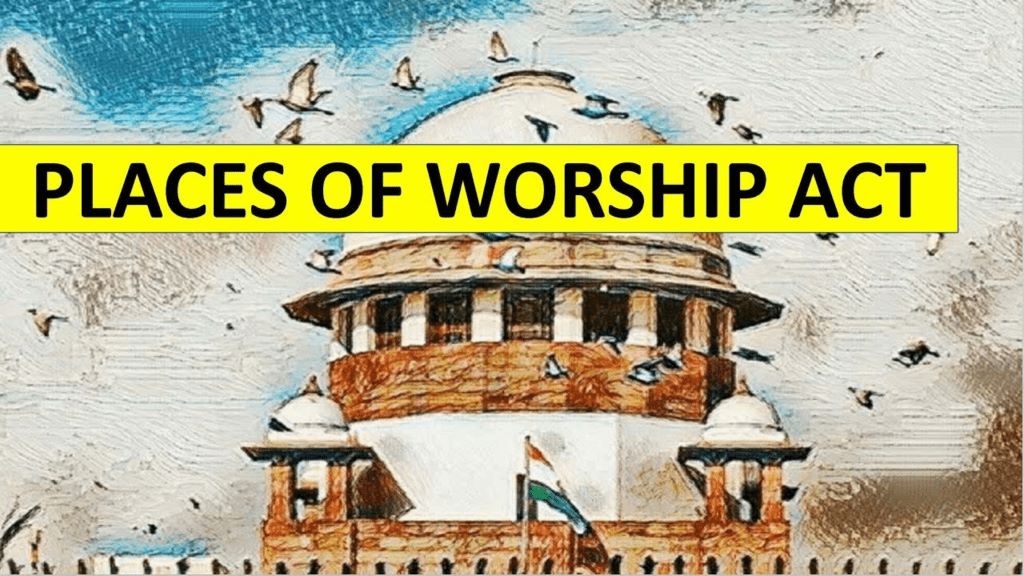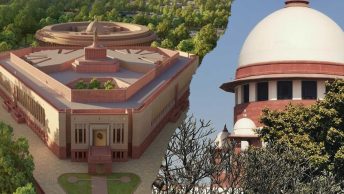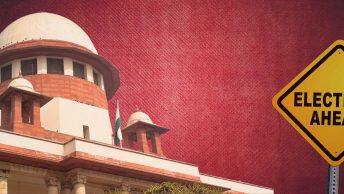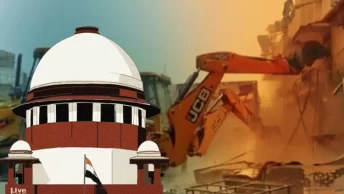[Ed Note: This explainer article has been authored by Nimisha Mishra. It has been co-edited and coordinated by Eeshan Sonak, Shravani Shendye, & Suhani Paruvelly from our student editorial team.]
The Places of Worship (Special Provisions) Act, 1991 (hereinafter, the Act) has recently come into the limelight following disputes concerning Hindu organizations claiming that their places of worship existed prior to the present-day mosques standing in the same places. This includes the Kashi Vishwanath Temple in Varanasi and Krishna Janmabhoomi at Mathura.
The disputes are centered on the question of whether these places of worship were demolished during Islamic rule in the medieval period for mosques to be built in their place, and how this is viewed under the framework of the Act. The Act pertains to restricting disputes concerning the conversion of the places of worship by illegal encroachment and provides safeguards to the religious character of a place that existed as of August 15, 1947.
Interestingly, despite the constitutionality of the Act already being established in the Ayodhya Title Dispute in the case of M Siddiq (D) Thr Lrs v. Mahant Suresh Das (hereinafter, M Siddiq), the Supreme Court (hereinafter, the SC) has admitted a writ petition filed by a former spokesperson of the incumbent Bhartiya Janta Party, Shri Ashwini Kumar Upadhyay. A close reading of the M Siddiq case reveals that the grounds raised in this writ petition have already been answered by the constitutional bench of the SC.
In this context, this article critically analyzes the constitutionality of the Act by studying the conflicts in contentions raised in the recent writ petition filed by Ashwini Kumar Upadhyay. It unpacks the arguments related to the cut-off date for application of the Act, questions regarding the Act’s secular character, registrations on the judicial remedy available, and the socio-legal implications of the decision.
Cut-Off Date Conundrum
The petitioner has contested the cut-off date, i.e., August 15, 1947, provided under Section 4 of the Act (which preserves the religious character of a place of worship as existed on August 15, 1947), to be an arbitrary irrational retrospective cut-off date set by the Centre.
The intent of the Act, while setting August 15, 1947, as the cut-off date, is to put to rest any pending or possible suits that could be filed pertaining to the conversion of worship places. Moreover, as cited in M. Siddiq, a former MP Malini Bhattacharya, explained the relevance of August 15, 1947, as the cut-off date in Lok Sabha Debates, Volume V (page 443):
“I think this August 15, 1947, is crucial because on that date we are supposed to have emerged as a modern, democratic, and sovereign State thrusting back such barbarity into the past once and for all. From that date, we also distinguished ourselves…as State which has no official religion and which gives equal rights to all the different religious denominations. So, whatever may have happened before that, we all expected that from that date there should be no such retrogression into the past.”
While deciding M. Siddiq, the SC reasoned that the Act, by providing a cut-off date, becomes a legislative intervention in order to preserve the doctrine of non-retrogression, which was explained by then Chief Justice of India in Navtej Singh Johar v. Union of India (Para 188 & 189). The doctrine insinuates that rights should not be suppressed and that society must advance rather than regress. Quite clearly, the courts have already reasoned that any attempt to unravel the Act or any provisions enshrined therein shall result in the violation of the doctrine along with jeopardizing the secular character of the Constitution.
Secular Nature of the Act
The petition contests that Section 3 of the Act, which puts a bar on the conversion of a place of worship of any religious denomination, is violative of Articles 14, 25, and 26 of the Constitution. Thereby, the petitioner argues that it is unconstitutional on the grounds of violating the principle of secularism, which is an integral part of the Constitution, as enunciated in the Preamble.
The legislative intent of the Act, as explained in M. Siddiq (para 81), is to restrict the conversion of the character of the places of worship, and thereby, the Act is an affirmation of the solemn duty cast upon the State in order to preserve the secular nature of the Constitution. The Indian Constitution mandates every state to uphold principles of secularism by treating all religions, faiths, and their respective followers equally, as held by a nine-judge bench in S.R. Bommai v. Union of India. However, Article 25 of the Constitution, apart from guaranteeing the right to freedom of religion, also places reasonable restrictions on the ground of public order, morality, and health.
The Act was introduced in the backdrop of the law-and-order situation arising in the context of the Ayodhya-Babri Masjid demolition dispute in 1991. Therefore, it is essential to read the Act in the context of this dispute and the communal violence that took place across the country as its consequence.
Moreover, the “place of worship” mentioned under Section 2(c) of the Act includes places of worship of the people belonging to all sections and denominations thereof equally, as provided under Article 14 of the Constitution, which guarantees equality before the law and equal protection of law to every person in India. Therefore, it can be asserted that the contentions raised in the petition violate Article 14 by giving preference to persons belonging to certain religious denominations over others.
A reasonable restriction on Judicial remedy
Section 4(3)(e) of the Act puts restrictions on approaching the High Court under Article 226 or the Supreme Court under Article 32 of the Indian Constitution against the illegal encroachment on the places of worship, which was converted prior to August 15, 1947.
The petitioner argued that the Act bars the judicial remedies available to Hindus, Buddhists, Jains, and Sikhs, under Article 32 or 226, thereby, restricting the restoring back of religious property to Hindus.
Pertinently, Articles 32 and 226 provide judicial remedies for the protection of fundamental rights enshrined under Part III of the Constitution. However, for a judicial remedy to be enforceable the claim of one party should not be in derogation from the rights guaranteed to another party. This remedy is not enforceable under the Act due to the following two reasons:
Firstly, the petitioner seeks remedy for violation of the freedom of religion guaranteed to people belonging to another denomination. Such a plea is unconstitutional on the grounds of violation of the fundamental rights of the latter.
Secondly, the petitioner belongs to the party which enjoys a majority at the Centre, therefore it is contended that the Centre might be using these proxy litigations as a facade to evade the public embarrassment of repealing the Act through the Parliament. Similar proxy litigations were found to be filed by politically influenced spokespersons in the garb of public interest litigation. In order to restrict such proxy litigation, limits have been put to approach the court under Article 32 or 226 of the Constitution.
Reasonable expectations from the Court and Implication of the Case
The SC has asked the Centre to respond to this petition within two weeks and file its reply. It can be expected of a responsive government that it will discourage any petition challenging the constitutional validity of the Act, as a gesture of respecting the Court’s decision in the 2019 Ayodhya Judgment, which expressly upheld the Act. On the same ground, the petition is not legally sustainable as it aims to alter the religious character of the Gyanvapi mosque complex, hence squarely fitting the provisions for the places of worship as mentioned under the Act.
The decision of the two-judge bench comprising Justice D.Y. Chandrachud and Justice J.B. Pardiwala, given on September 30, 2022, is likely to have a tendency to determine the validity of similar litigation that may arise in the future. The Coram is revised; it now comprises Justice D.Y. Chandrachud and Justice Hima Kohli. This is an opportunity for the courts to embrace again the constitutional values, multi-religious, and multi-cultural dimensions with which the Act was enacted in 1991 to uphold the secular nature of the Constitution.
Nimisha Mishra is a fourth-year student at NALSAR University of Law, Hyderabad. She is an enthusiast for exploring the different dimensions of Constitutional Law and Public Policy.







[…] Posted byNimisha Mishra […]
Your article helped me a lot, is there any more related content? Thanks!